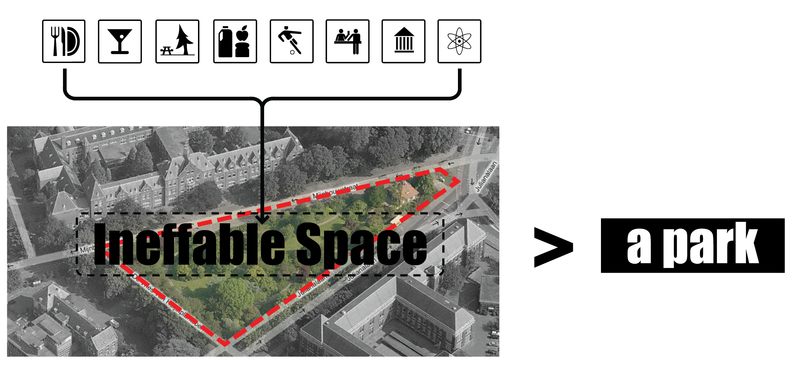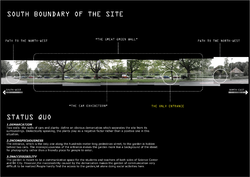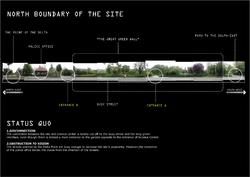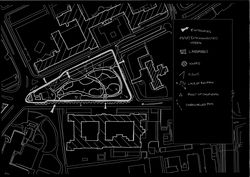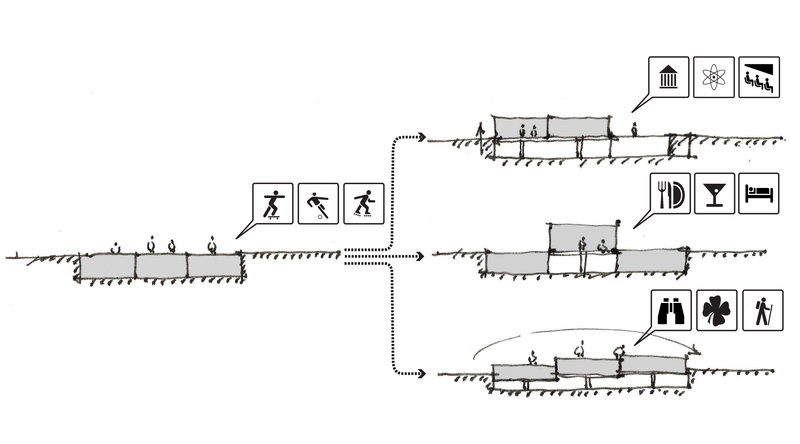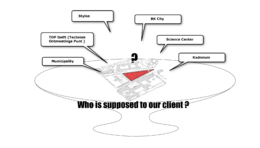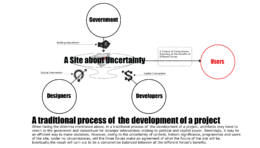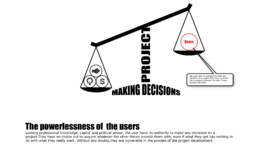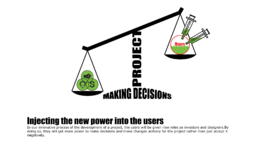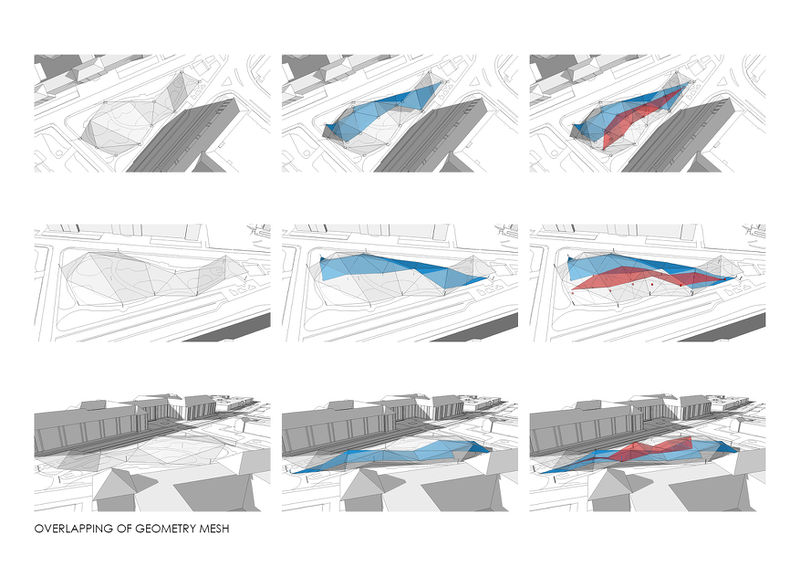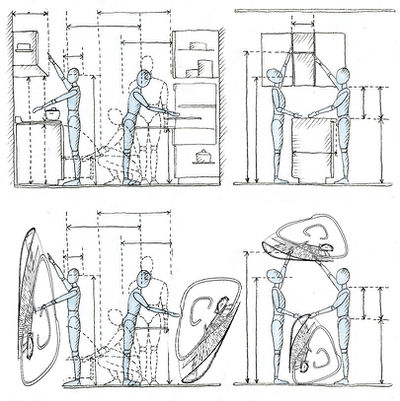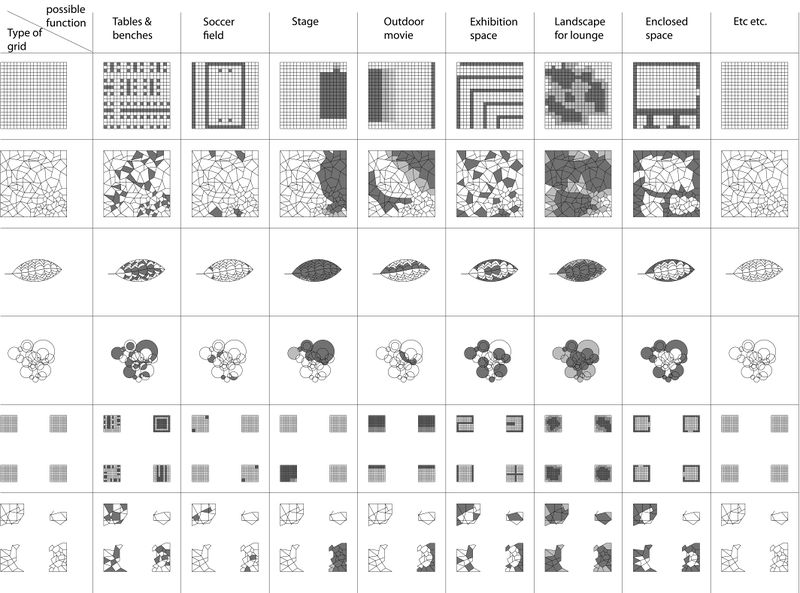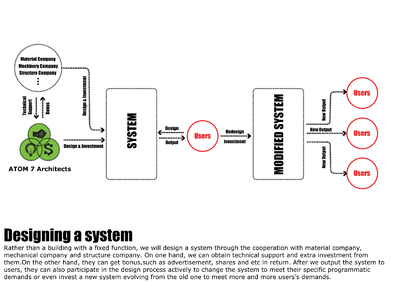atom07:Backup main page 16-11-2011
Contents |
Site
The site has diverse vegetation, a nice view of open space and surrounding buildings. However, the most disruptive influences are sound, and the very little activity.
Additional Information on Site Qualities
Concept
First and foremost architecture is the creation of a habitat for human living. Architect, Le Corbusier best describes remarkable spaces that he has experienced as ‘ineffable space’. He mentions that he is not a religious man, yet when entering certain spaces, a sense of spirituality is imbued in him. The ‘ineffable space’ that Le Corbusier speaks of has been lost and has been replaced by skin architecture. Advancements in technology have led to great achievements; the adaption of architecture into the digital age has been very sluggish. It is thus essential that the architect of today should attempt to move away from architecture as a visual stimulant, but rather go back to the roots of what architecture stands for - the creation of a healthy living environment for its users. Future architecture will be more dynamic.
The concept and drive for our design is the focus on architecture as an adaptable habitat, an architecture that fulfils the needs of its inhabitants. The design is dynamic, but that is not important. What is essential in the concept is that through a dynamic structure more functions are able to take place. This notion of changeable function creates the ultimate approach in architecture – the creation of space that allows for multiple and adaptable programme.
Design Challange Process
Making an intervention adaptable in such a way users will be tempted to use new age architecture. In order to do this, a bottom up design exercise is needed. An investigation of different party's will help attract viable funding to the project.
Design approach
Validators
Users are important elements of the design process. They need to be incorporated in the project at an early stage. In order to begin with a broad spectrum some different actors where approached and asked what their thoughts and interest are for the project. Positive feedback from possible clients insured us that we are heading in the right direction. The foresight of having a meeting space has been accepted as an essential requirement for the different parties.
Main Validator
Stylos was very interested in the project and and proposed to us that they would like to be closely incorporated in the project. They even mentioned they would be interested in taking on a supervisory role of the site in the future.
Experimentation
1. User - object interaction
In the Orange Lecture hall we made several set ups which the users were able to adapt to the experiment to suite their demands. The set ups varried from comfortable to obstructive.
conclusions:
- Bigger effort made to have a comfortable seat.
- Diverse arangement of spaces, caters for larger user group.
- People sit closer to their point of interest.
- Person adapt to given situation.
- People only change elements when necessary.
- Difficulties changing elements embarrass people.
2. GPRS Mapping
From Kevin Lynch’s empirical research on how individuals perceive and navigate through a site has led to research done using GPRS tracking devices for site analysis.
We added a mesh between all the points and overlaid the different layers over each other to see the effect of how different activities are linked and intertwined. To conclude, the overlapping spaces can provide a variety of programmes without disrupting the original scheme.
3. Traditional anthropometrics
Traditional Anthropometrics are related to the human scale and objects we interact with. Once the shape and size of an object change, the dimensions governing the interaction between object and user will also have to change. Our design will then lead to new studies of anthropometrics to enable comfortable interaction for the user.
Technical Design Challange
The concept of having a changeable environment automatically is inherent to using new technique's. For this concept a concrete wall wouldn't work. For the execution of this project a start was made with the exploration of possibillities.
Grid
It becomes clear, a large grid with small ellements will have the most options in it.
Elements
A first look at the elements already shows probably a single element will not be able to create all the different spaces. a combination of element a and d, seems the most rewarding combination.
More sketches about possible use of elements
Client
The initial cost will be funded by:
Stylos
Sponsors (materials)
TU Delft
Rent-able space from users will pay for future maintenance costs.
Specialisation
Strategies and solutions for customization of programme – via fabrication and experimentation.
Experts
TU Delft Architecture Department - Susanna Komossa - Public realm Studio
Gallery Owner – Linda Ammerlaan
Ergonomics of Structure - Industrial Designer, Andre Taris
Software- Roxana Palfi (still to confirm) + Online Forums
Business Strategies- Yes Delft, Delft Design
References
"We highly recommend looking at these interesting references. Some of them have unique qualities that we possibly see incorporated into our project."
- “I propose we leave math to the machines and go play outside.”
- - Calvin & Hobbes''
About Us - Archive - Contact Us
